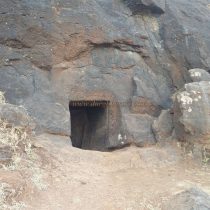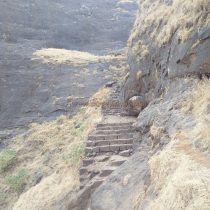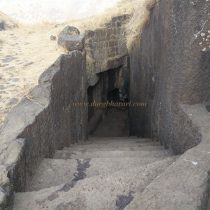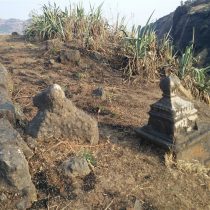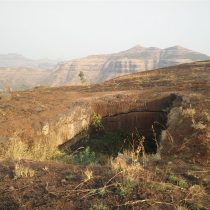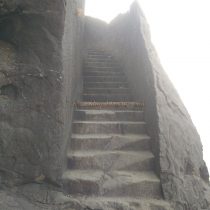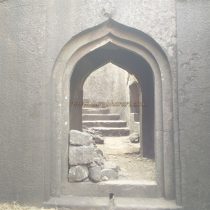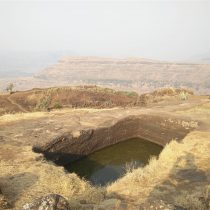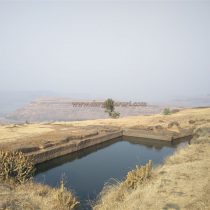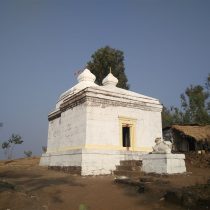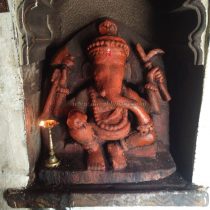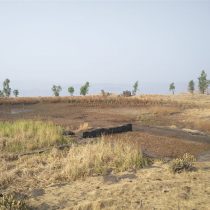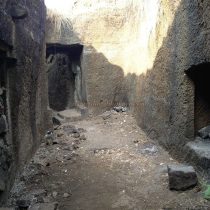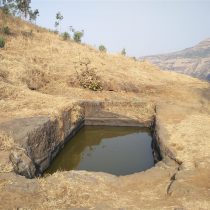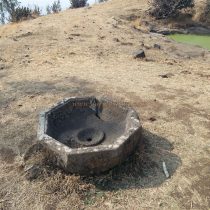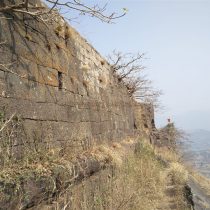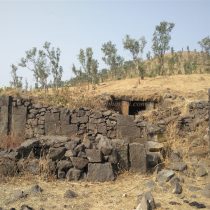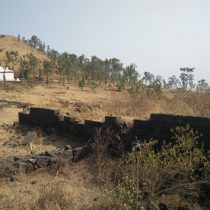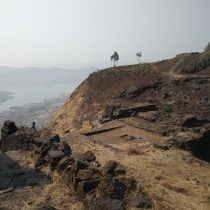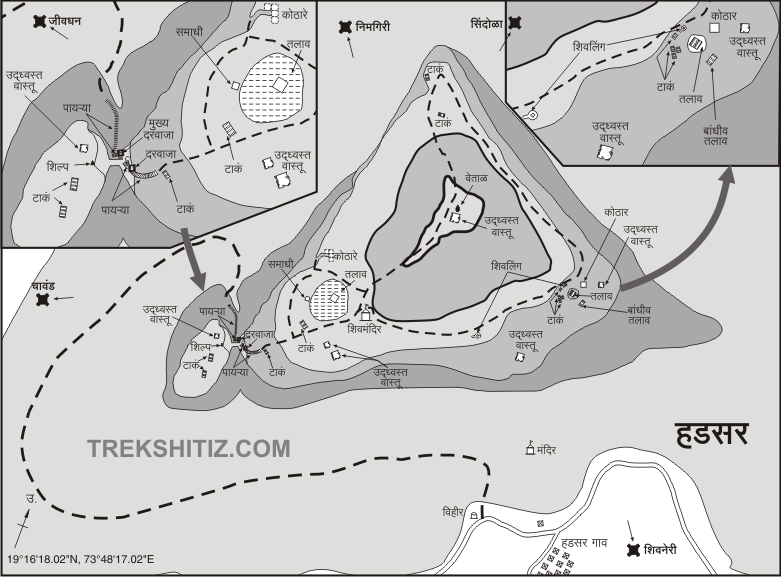HADSAR
TYPE : HILL FORT
DISTRICT : PUNE
HEIGHT : 3727 FEET
GRADE : MEDIUM
Satvahana dynasty is a beautiful dream for Maharashtra. If we look deeper into history, we find mention of Satvahana kings in the caves of Naneghat two thousand years ago. Naneghat, which connects Konkan and Desh, was constructed during the Satvahana dynasty. At that time, a market was established at a short distance from Naneghat in the village of Jirnanagar i.e. today's Junnar. During the reign of Satvahan, forts were built on the shoulders of Sahyadri in Maharashtra. The entire Sahyadri was adorned with forts on various stages. Over time, some of the forts in these ranges were forgotten. One of these forts is Hadsar fort aka Parvatgad. To reach here, one has to reach Junnar from Mumbai via Malshej. A road leads from Manikdoh Dam near Junnar towards Anjanawale and Ghatghar village is towards Naneghat.
...
This fort is located 15 km west of Hadsar village on this road. S.T buses going to Anjanawale village are convenient to reach the hadsar fort if you do not have a private vehicle. There are three ways to reach the fort. The main way to the fort is through the steps in the gorge, the second way is carved by the villagers for their convenience and the third way is also constructed by the villagers through the southern wall of the fort. The first two paths are easy and the third path is a bit difficult. If you want to explore the fort completely, you have to climb up the fort from the first way of the gorge and descend from the second way. It is necessary to reach Hudsar village to reach the fort and from there take up the first path. On the way to the hill behind Hudsar village, there is a well. Go a little further from there and go to the plateau on the left. After passing some distance through the fields on the plateau, one can see the gorge between the two hills and the ramparts built between them. After walking towards this gorge, we reach the bastion in half an hour. Here you come to the first gate of the fort by doing some easy rock climbing. This is the second way to the fort, but the main and original way to Hudsar fort is to climb the hill next to it. On this road, go straight ahead without turning towards the gorge, take a detour to the hill on the left and reach the backside of this hill. On the way, there are two water cisterns carved in the cave. The neighboring hill and the water cistern carved in this hill are also a part of Hudsar fort. Moving ahead on this hill, you can see some steps leading to the fort. From here, after climbing about three hundred steps, you reach the main gate of the gorge. The path to the fort is very easy and is built in the gorge. It takes 1 hour to reach here from Hudsar village. The entrance to the Hudsar fort is a masterpiece of architecture carved into the rock. It is worth seeing the path carved out of the cliffs and the walls of the cliff itself, the two doors carved into the rock next to it and their linear arches as well as the adjoining bastions and the carved porches for the guards. When you come up through the main gate of the fort, there are two paths. The path on the right leads to the small hill in front, while the path on the left leads to the second gate of the fort. The hill in front has a rampart in the direction of the road coming from the gorge and a bastion is built at the end. There are two water cisterns on this hill and there is an idol of Ganesha in the open. In front of this idol is a worn-out Nandi and a carved Samadhi. This hill and the fort are connected by a 20x40 feet long rampart and some remnants of construction can be seen on this rampart. On the way to the second door, you see a carved pillar at the end of the wall and then you enter the fort through the steps and door carved in the rock. When you come up through the second door, there is a water cistern carved in the ground in front and a small Shivling is carved on its edge. Hudsar fort is 4687 feet above sea level and this triangular fort is spread over an area of 90 acres from south to north. From here, the footpath leads to the hill in the middle of the fort. At the foot of this hill is a Shiv temple and on the way to the hill, you can see a large cistern carved in the rock. The water in this cistern is currently used for drinking. The Shiv temple is constructed of stone and this temple consists of sanctum sanctorum, sabha mandap, and a big Nandi in front of the temple. There is a Shivling in the temple and the corner of the hall, there is an idol of Ganesha, an eagle, an idol of Hanuman, and a broken idol. If you want to stay at the fort, this Mahadev temple can accommodate 4 to 5 people. The hill adjacent to the temple is covered with grass and eucalyptus trees. This hill should be the citadel of the fort but there are no remains of it. Not only Hadsar but the entire Junnar region is visible from this citadel. From the temple, you should start walking around the fort. Behind the temple is a large circular pond with 3 water cisterns carved in the rock. There is an idol of a forest deity under a tree on the bank of the lake and two large Samadhi’s built of carved stones can be seen. One of these Samadhi has been demolished and the other Samadhi is still standing. On the way to the lake, turn right and you will see a path dug in the belly of the water flow. There is a door at the end of this path and three caves are carved in the inner part of this door on all three sides. There are signs of a roof on this road. The door of two of these caves has a carved window. Inside each of these caves, another large cave is dug deep and the entrance doors are small and square. This cave should be for storage, not for living. Today these warehouses are uninhabitable. From here, go around the citadel and go to the eastern end of the fort. There is grass all over the road and there are many remains of houses. rock-carved steps, guard posts, and fortified ramparts. This triangular-shaped fort has broken corners on all sides and the fort is separated from the rest of the land by breaking the trunks that joined the fort with land on the south and east sides of the fort. It is only in this area that the ramparts are built, as there is a road leading to the fort from the west. On the way to the eastern bastion of the fort, water cisterns can be seen at five places. The water in one of these cisterns is potable. In the area of this bastion at the eastern end of the fort, a large number of remains can be seen. The remains include a Shivling carved on a rock, an idol of Hanuman, a stone pot of a fountain, a fortified bastion, a rampart, and a horse's stable. There are five water cisterns in this area. On the right side of the bastion wall, there is an extinguished cistern. A little further on, there is a large cave carved in the rock. After seeing the cave, come back to the bastion and take the next path. There is another dried up cistern on this road and this road leads to Shiv temple. On the lower slope of the temple, there are three such water cisterns one below the other and on the upper side of the cistern is the remains of the fort and the mansion. This is where your fort round ends. It takes two and a half hours to walk around the entire fort. From the fort, one can see Manikdoh reservoir, Chavand, Naneghat, Shivneri, and Jeevdhan. On the way down from the fort, in front of a temple on the plateau near Hadsar village, one can see five relics of recent times. Naneghat has formed about two thousand years ago. During the Satvahana period, Naneghat was formed by breaking a hill near Junnar on the way from Kalyan to Satvahana's capital Pratishthan (Paithan). The Satvahanas are the oldest known kingdom in Maharashtra. They ruled over Maharashtra from 250 BC to 250 AD for about 500 years. In ancient times, goods unloaded at the port of Kalyan were loaded on horses or oxen and taken for trade to the city of Pratishthan, the capital of the Satavahanas. Junnar was the major market of Satvahans. Jeevdhan, Chavand, Hudsar, and Shivneri forts were constructed for the protection of this market and trade route. The fort’s mention is recorded in 1637 AD. Hudsar fort was one of the five forts given to the Mughals by Shahaji Raja in his defeat against the Mughals. Although the fort is not mentioned much during Shivaji Maharaj’s period, Hadsar is mentioned in the 37th verse of the first chapter of Jayaram Pinde's Parnalparvat grahanakhyan. It is mentioned that Chamundagiri (Chavand), Harishchandragad, Mahishgad (?) And Hadsar forts were conquered by Shivaji Maharaj. Most likely, the fort was named 'Parvatgad' during this period. Krishnaji Anant Sabhasad mentions this fort as Parvatgad in his Bakhar. The fort is referred to as 'Harsul' in the Mughal records. In the Peshwa period, this fort was with the Marathas till the last Maratha-British war. During the battle of 1818, when Major Eldridge defeated Junnar fort, Junnar's fort keeper took refuge at Hadsar. The fort was later besieged by a detachment of the British and on 25th April 1818, the fort came under the control of the British.
© Suresh Nimbalkar

